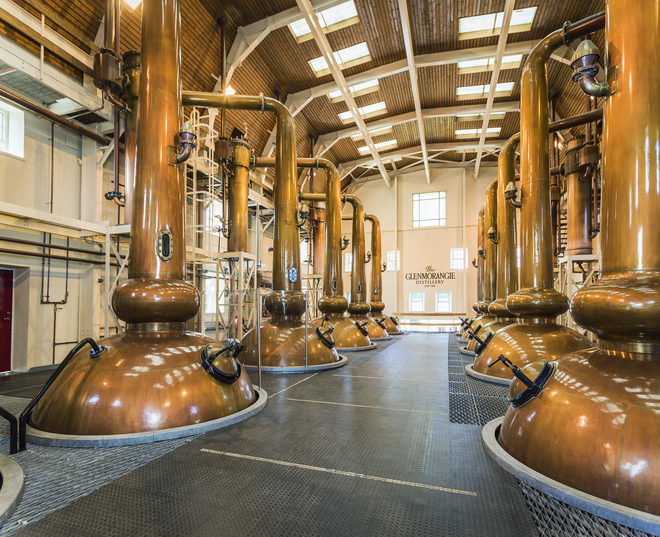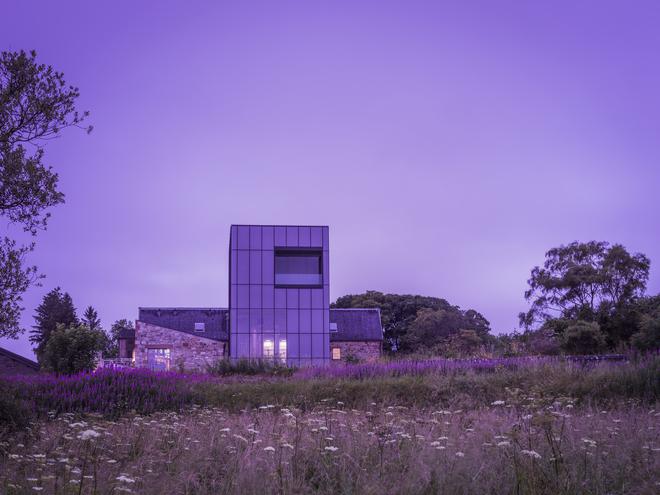As director of distilling and whisky creation at Glenmorangie Company, Bill Lumsden’s nose has taken him to interesting places. So, it’s always a pleasure to catch up with him, to get his perspective on an industry that, while rooted in traditions and heritage, is constantly on the move. Of late, I’ve been interested in how whisky companies have adapted to bars and restaurants shutting down for large periods of time, by focussing more on retail/e-commerce and D2C (direct to consumer) initiatives. Bill says there is no question that D2C is the future, and in words reminiscent of the CIA, he indicates that “he can neither confirm nor deny that they are in fact working on products specifically for the e-commerce environment”.
Experiments with Tokaji
A few months ago, I’d tasted The Tale of Cake, a Glenmorangie limited edition that had been finished in Tokaji casks (wines from Hungary known for their exceptional sweetness), with only 1,000 bottles allocated to India that quickly sold out. Bill’s first experiments with Tokaji had rendered him shaken rather than stirred, as the liquid left inside, although delicious and sublime after 18 months, then lay forgotten for another two-and a half years, with the tannins in the wood overpowering the whisky within. An oversight Bill chastised himself for, especially after being known for his work with other wine casks like the Sauternes and port casks like the Quinta Ruban.
Bill was “very very upset” and as he remarks to me, this was a “thorn in his flesh”. A subsequent whisky finished in Sauternes Casks, the Nectar D’Or was quite sumptuous, but he still had Tokaji at the back of his mind. So, he experimented again with it, with the results reminding him of confectionery and cake, and a marketer’s delight.

All this innovation, according to Bill, is the by-product of a philosophy where he has absolutely no limits when it comes to spending on new product development and other innovations, with Lighthouse, their new innovation distillery — that sits on the site of the 180-year-old Scotch whisky distillery, just outside Tain in Scotland — being a singular example, coming at an investment of a few million pounds. As he explains to me, “It’s all about doing what’s right for the brand and if I believe that, then as long as it’s reasonable too, the support, whether from management or financial in nature, is complete from the company.”
Fine with age
He's also renowned for his experimentation with exceptional casks at various ages, and the use of wood finishing. He’s the perfect person therefore for me to put a question to as regards the accelerated ageing of spirits. Several companies around the world, including Los Angeles’ Lost Spirits are tinkering with various methods, including via light to accelerate the ageing of the liquid inside. “I’m normally always in favour of something that helps bring whisky to a wider audience. While I do recognise that single malt whisky is very expensive, especially when tariffs like we have in India are added on, speaking as a professional taster, the results are not just as good,” he says. According to Bill, at the moment, although such techniques are adept at replicating the woody notes that a cask typically provides to a whisky, where they lose out is in the fruity and floral notes, and therefore in his opinion, it is an “inferior product” and not something that he’ll be working on himself for any expressions of Glenmorangie or the Ardbeg.

Companies around the globe in all sectors are focused on reducing their carbon footprint, so I end my conversation trying to understand what Glenmorangie is doing. “Sustainability is the number one focus” for the Glenmorangie as well as all other companies in LVMH, he says. Energy consumption is the biggest target with the use of solar and wind power on the rise. Given that barley is their main raw material, they’re looking at less resource-intensive ways of growing barley.
All eyes on X
I’d attended the launch of Glenmorangie X in Delhi — a single malt, as the blurb went, that was made for mixing. That had tickled my curiosity and I ask him what makes this whisky designed for cocktails. “X is fuller bodied and spicier than the Glenmorangie original [10 year old],” he says, “with notes of dark chocolate and ginger” that are better able to stand up to the demands of modern mixologists.

“A Shetland wool sweater as compared to the cashmere of a 10 year old”. And although he didn’t create the product specifically for mixing, he’s all in favour of whiskies that are more democratic, both in terms of price as well as in approachability in taste. He pours out a wee dram of the X as we speak, and I reciprocate with one of the Tale of Cake, toasting each other across a screen, his mind I’m sure already alight with a million possibilities of “what next for whisky”.
The writer is the founder and CEO of Tulleeho, a drinks training and consulting firm as also co-founder of 30 Best Bars India.







